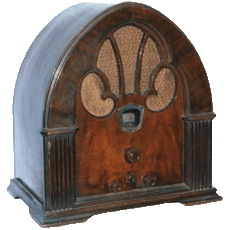01-24-2013, 11:05 PM
One part of my radio collection I really love are the memories I have of getting them, especially the first ones I got when I was a teenager. Recently I pulled a 1937 Detrola model 137 out of hiding in my attic. I remember getting this set at a Fall fleamarket way back in 1981 for 15 bucks. I remember being really excited about this find as at the time it was the second oldest radio I had gotten. i played around with it for awhile, but not yet really knowing alot about electronics, I never did get it to play. Fast forward 32 years and I have rediscovered it and have decided that it was time to fix that.
It's an early AC/DC set and there is not a lot of room under the chassis. I would like to restuff the original electrolytic cans not only to preserve the look, but for space issues as well. So after pulling the cans off the chassis, I discovered that there is still liquid in them. I've restuffed electrolytic cans before but they have always been dried out. My question is, Is the liquid in the cans toxic or hazardous? What is it made of anyway? Any one have any input? Thanks!
Kevin
It's an early AC/DC set and there is not a lot of room under the chassis. I would like to restuff the original electrolytic cans not only to preserve the look, but for space issues as well. So after pulling the cans off the chassis, I discovered that there is still liquid in them. I've restuffed electrolytic cans before but they have always been dried out. My question is, Is the liquid in the cans toxic or hazardous? What is it made of anyway? Any one have any input? Thanks!
Kevin



![[-] [-]](https://philcoradio.com/phorum/images/bootbb/collapse.png)


